Silent Generation
Silent Generation is a Chicago-based cultural analysis podcast that surveys the cultural consequences of car-oriented development in the mid-20th century. It explores what was lost between the Silent Generation and Generation Z, pointing to negative outcomes (nihilism, regional homogeneity, and low-trust societies) and potential antidotes (subcultures, secular social movements, and moral codes). Topics discussed include aesthetics, fashion, history, and urbanism. Find us on Instagram: silent.generation
Episodes
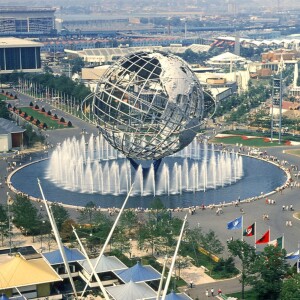
Tuesday Apr 15, 2025
Tuesday Apr 15, 2025
World’s fairs, now called World Expos, are large global expositions that exhibit the achievements of nations. They originally focused on industry and technology before shifting to a focus on cultural exchange and nation branding in the mid-20th century. On this week’s episode of Silent Generation, the boys go into a deep dive of several notable world’s fairs including the 1851 Great Exhibition in London, the 1893 World’s Columbian Exposition in Chicago, the 1904 Louisiana Purchase Exposition in St. Louis, The 1933 Century of Progress Exposition in Chicago, and the 1964 World’s Fair in New York City. They conclude the episode by talking about how and why the world’s fair has declined as a cultural institution. Amongst other things they discuss how the Ferris wheel was first invented for Chicago’s 1893 world’s fair, how the 1904 St. Louis world’s fair put over 1,000 Filipino people on display, how the Van Wyck Expressway was extended to provide access to the 1964 NYC world’s fair, and how the newest world’s fair just opened in Osaka, Japan this week.
Links:What Was the Great Exhibition of 1851 by Steven BrindleFalsifying History by Destroying Cities - Stewart Hicks1500 Buildings Built in 3 Years - Louisiana Purchase Exposition 1904 - Auto DidacticLong-delayed DiCaprio/Scorsese serial killer film Devil in the White City back on track by Andrew PulverThe 1964 World’s Fair (1996)OSAKA EXPO 2025! All To Know Before You Go!Ticket presales, pavilion completion slow 1 month before Osaka ExpoExpo 2025 Osaka: 8 Must-See National PavilionsThe Fall of The Fair by Harry Swartout
Artwork:NY World's Fair 1964-1965 by PLCjrAttribution-NonCommercial 2.0 Generic
Recorded on 4/13/2025

Tuesday Apr 01, 2025
Tuesday Apr 01, 2025
Metrosexual is a term first coined by British journalist Mark Simpson in 1994. It is a portmanteau of the words “metropolitan” and “heterosexual,” and it describes straight men who care about their personal style in a similar manner to gay men. The term only entered mainstream discourse in 2002 after Simpson “outed” David Beckham as metrosexual in his Meet the Metrosexual article. On this week’s episode of Silent Generation, Joseph and Nathan compare and contrast the metrosexual with similar cultural figures like the flâneur and the Yuppie. Amongst other things they discuss how the 2003 series Queer Eye for the Straight Guy functioned as “metrosexuality: the reality TV show,” how there was a “retrosexual” backlash against metrosexuality towards the later half of the 2000s, and how we might be experiencing the fifth wave of the “men move to cities and become more stylish” phenomenon in the present day.
Links:Here Come the Mirror Men: Why the future is metrosexual by Mark SimpsonMeet the Metrosexual by Mark SimpsonMetrodaddy Speaks by Mark SimpsonForget new man. Now you're hetero, retro or metro by Mark SimpsonWho are you calling a metrosexual? Is it time to return to when 'men were men'? by Dave BesleyMetrosexuals - A Documentary (2004)What Is a Metrosexual? The 2003 Trend That Came With the Success of ‘Queer EyeAre You a Heterosexual Male Diva? By David CrunkThe Rise of the Brosexual by Megan CollinsDiscussing Menswear as a Woman by Ash Callaghan
Artwork:AI generated
Recorded on 3/30/2025
![Ep. 65: Air Travel [TEASER]](https://pbcdn1.podbean.com/imglogo/ep-logo/pbblog17628020/Air_Travel_1400_300x300.jpg)
Tuesday Mar 25, 2025
Tuesday Mar 25, 2025
Full episode available on Patreon: https://www.patreon.com/SilentGeneration
On this week’s episode of Silent Generation, Joseph and Nathan examine all things related to air travel. They begin with a historical deep dive that breaks air travel down into six distinct eras: the invention of aviation, the first golden age, WWII, the jet age, deregulation after 1978, and the modern era. The boys then go in several anecdotal directions, reminiscing about the airlines of yesteryear (Pan Am and TWA) and the decline of in-flight service. Amongst other things they discuss how the Airline Deregulation Act of 1978 caused airlines to begin competing on price instead of service, how Southwest recently got rid of their two free checked bags policy, how Pan Am used to serve passengers beluga caviar, and how the TWA Hotel in NYC gives modern people the opportunity to experience Jet Age luxury.
Links:
The Case For Santos Dumont
The Wind Rises (2013)
Airlines’ Secret Scheme to Keep Airfare Prices High
Boeing: How much trouble is the company in? by Theo Leggett
Passengers evacuate onto wing of American Airlines plane after engine catches fire at Denver airport by Pete Muntean and Alexandra Skores
Fury as Southwest Airlines puts an end to one of its most popular perks by Ben Shimkus
Goodbye to ‘bags fly free’ on Southwest Airlines, the last freebie in America by Leslie Joseph
Matt Stoller: How To Fix The Airline Industry's Structural Problems
The Rise And Fall Of Pan Am
Come Fly With Me: The Story of Pan Am (2011, BBC Documentary)
The meme about galas
Joseph Meeting Griz from 30 Rock
Joseph on a cargo plane
Woman strips naked and walks screaming down the aisle on Southwest flight to Phoenix by Terry Dickerson
Whitneylynn1 (Instagram Evangelist)
You’re Crazy For Taking the Bus by Johnathan Richman
Artwork:
TWA Convair 880 Lounge Publicity Photo
San Diego Air and Space Museum Archive, Public domain, via Wikimedia Commons
Recorded on 3/20/2025
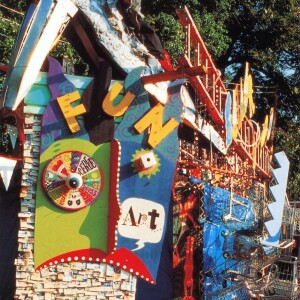
Monday Mar 17, 2025
Monday Mar 17, 2025
Whimsicraft is an aesthetic that flourished from the mid 1980’s to the mid 1990’s that is composed of saturated colors, celestial symbols, heavy patterns, and handmade crafts. It describes “things you would see at an art fair in 1994” and it is “the aesthetic of the 'fun quirky artsy aunt' character in 90s media.” The aesthetic was first identified by Evan Collins, one of the founding members of the Consumer Aesthetics Research Institute, who is the guest for this week’s episode. Joseph and Nathan begin by interviewing Evan about his history with CARI before diving into an exploration of Whimsicraft. Amongst other things they discuss how the art teacher depicted in Ghost World is emblematic of the wacky ‘90s art teacher trope, how the intro for the HBO kids Original series Crash Box demonstrates the darker found object subaesthetic of Whimsicraft, and how the Cows on Parade art event in the Summer of 1999 served as the culmination of the Whimsicraft ethos and aesthetic.
Links:
Whimsicraft Pinterest board: https://pin.it/2RP8NSgW3
Evan’s Whimsicraft Are.na: https://www.are.na/evan-collins-1522646491/whimsicraft
Evan’s Consumer Aesthetics Research Institute Patreon page
Evan’s Bluesky
Whimsicraft CARI page
Whimsigothic CARI page
Whimsicraft by hellomynamesjon
Whose art teacher died in Ohio?
Mix It Up! All About Courtly Check from MacKenzie-Childs
Victoria Mckenzie-Childs’ Youtube account
Victoria MacKenzie-Childs shows her Kitchen
Harriet The Spy (1996) wind chime garden scene
Crashbox (1999) intro
Cows On Parade Chicago 1999
Cows Milked for All Their Worth
Artwork:
Bazaar Bizzoso Entrance - Atlanta, GA (1993)
Recorded on 3/9/2025
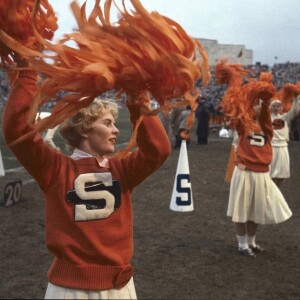
Tuesday Mar 11, 2025
Tuesday Mar 11, 2025
Cheerleader rock is a music genre that incorporates cheerleader chants, blaring electric guitars, and marching band instrumentals. It first emerged over two decades ago in the mid-2000s, but it was never identified as a trend or defined as a genre. On this week’s episode of Silent Generation, Nathan is joined by friend of the pod Christine to discuss the two standout acts of this style (The Go! Team and Sleigh Bells) along with several musicians who have released cheerleader rock tracks (Toni Basil, Gwen Stefani, and Junior Varsity). Amongst other things they discuss how Nathan first discovered The Go! Team through a Cartoon Network advert, how Derek E. Miller envisioned Sleigh Bells as “‘Hollaback Girl’ with metal guitars,” and how Cross The Street by Junior Varsity mirrors Huddle Formation by The Go! Team. They round off the episode by talking about cheerleader fashion and cheerleader movies.
Links:Nathan and Christine’s Cheerleader rock playlistThe Go! Team Doc 2011Interview: The Go! Team The Go! Team tell us about the influences behind new album 'Get Up Sequences' by Bill PearisCartoon Network Presents: The Go-Team (Short Version)Sleigh Bells - Reign of Terror (Teaser Trailer)Sleigh Bells bring out the pompoms by Jeremy Henderson”Hollaback Girl’ With Metal Guitars’: Sleigh Bells Look Back on ‘Treats’ at 10 by Claire ChafferSleigh Bells – the tale of an ex-pop-star fourth grade teacher and a hardcore punk from The Sunshine State by Stuart StubbsSleigh Bells on Their Sixth Album Texis and “Breaking Old Patterns” by Chris VultaggioMeet the 4 Most Desired People in New York (According to OKCupid) by Logan HillBand To Watch: Junior Varsity by Tess GrowneyBROLIN ALMA and HAGBERG ALICE | Disco Dance World Championship 2019Where Cheerleading Ranks in Safety Among High School Sports by Walk Hickey
Artwork:Cheerleaders, 1959 (Syracuse, NY)
Recorded on 3/6/2025
![Ep. 62: Pulaski Day [TEASER]](https://pbcdn1.podbean.com/imglogo/ep-logo/pbblog17628020/Pulaski_Day_1_1400_8wy97c_300x300.jpg)
Monday Mar 03, 2025
Monday Mar 03, 2025
Full episode available on Patreon: https://www.patreon.com/SilentGeneration
Pulaski Day is a holiday observed in municipalities across the US that have large Polish populations. It honors General Casimir Pulaski, a Polish nobleman and military commander who played a crucial role in the American Revolutionary War. He is often called the "Father of the American Cavalry” and is celebrated for having saved George Washington’s life. This week’s episode of Silent Generation covers who Pulaski was, how the holiday came to be, and how the holiday is celebrated. Amongst other things the boys discuss how pączki are eaten on both Pulaski day and Fat Thursday (the Polish equivalent of Fat Tuesday, how the best (Polish) buffet in the Chicagoland area is the Red Apple restaurant, and how the Polish suffix “ski” was restricted to nobility.
Links:Casimir Pulaski BiographyPulaski Day: An Updated the History Guy Episode The Rise of Casimir Pulaski Day by Jesse DukesWhat is Pulaski Day? Here's what's closed and the history of this Chicago holiday by Rafaela JinichRevolutionary War hero Casimir Pulaski might have been a woman or intersex by Corky Siemaszko*screams in polish* memehttps://restaurantredapple.com/ LARGEST All You Can Eat TRADITIONAL POLISH BUFFET!Photograph of the soviet cars in the Polish Constitution Day Parade
Casimir Pulaski Day by Sufjan StevensHappy Pulaski Day, Fellow Chicagoans! Happy Crawford Day, Suburbanites!
Artwork:Parada 2024- fot.Michael J. Ariola0004
Recorded on 2/28/2025

Tuesday Feb 25, 2025
Tuesday Feb 25, 2025
This week’s episode of Silent Generation explores the idea that “around the world, nature is moving to cities.” The boys begin by introducing listeners to the concept of the Anthropocene and the ideas presented in Fred Pearce’s book The New Wild, both of which provide frameworks to start thinking that wild animals are not out of place in urban environments. They then talk about animals that are already accepted city dwellers (pigeons, rats, and squirrels) before talking about “wilder” animals that began moving back to cities like Chicago in the ‘90s (otters, snapping turtles, beavers, white-tailed deer, and coyotes). Amongst other things they discuss how Chicago is consistently named America’s “rattiest” city, how a rotund beaver was recently spotted on the bubbly creek branch of the Chicago River, how Chicago is home to 2,000 coyotes, and how coyotes significantly expanded their range after the 1920s due to the Anthropocene.
Links:
Paul J. Crutzen, Nobel laureate who studied ozone and named new ‘Anthropocene’ era, dies at 87 by Harrison Smith
The New Wild: Why Invasive Species Will Be Nature's Salvation by Fred Pearce
Chicago Named ‘Rattiest City In America’ For 10th Straight Year by Mack Liederman
Rats: Observations on the History & Habitat of the City's Most Unwanted Inhabitants by Robert Sullivan
How Does Chicago Track its Coyotes? Curious City Episode
River Otter Snapped for First Time in 15 Years of Monitoring by Lincoln Park Zoo’s Wildlife Cams by Patty Wetli
Chonk The Thicc Snapping Turtle Is A Superstar — And Great News For The Chicago River by Maia McDonald
A ‘Remarkably Rotund’ Beaver Is Making A Splash On The South Side by Leen Yasine
White Tail Deer Population over Time
Fear the deer: Crash data illuminates America’s deadliest animal
Largest Land Predator (by weight) in Each State
How Coyotes Captured the Continent
Coyotes Among Us by Stanley D. Gehry
Coyotes Among Us’ Authors Tell Chicagoans: Respect But Don’t Fear These Smart Predators by Web Behrens
Quiznos coyote moved to another cool refuge
Coyote pulled from the cold food section of Chicago Aldi store
A new VCU study explores the ‘nature is healing’ memes that dominated social media at the height of the pandemic by Brian McNeill
Urban Forests Are the Stroads of Urban Environmental Policy Upzoned episode
The Genius of Copenhagen’s 1947 ‘Fingers Plan’ vs England’s Green Belt Policy by Johnathan Tricker
In Horner Park’s Natural Area, ‘No Dogs’ Signs Ignored, Vandalized: ‘People Don’t Really Care’ by Seth Slabaugh
The Nature of Cities blog
r/urbanwildlife
Artwork:
City bird skyline building. A pigeon sitting on a ledge overlooking a city
Creative Commons CC0 1.0 Universal Public Domain Dedication license https://web.archive.org/web/20161229043156/https://pixabay.com/en/service/terms/
Recorded on 2/23/2025

Monday Feb 17, 2025
Monday Feb 17, 2025
From 1995 to 2010, humor on the early internet—and in broader American culture—was arguably the most simple and direct. Referencing a single “ironic” animal (like a moose, cow, or narwhal) or food item (such as tacos, waffles, or nachos) was enough to make someone giggle. As detailed by Joseph and Nathan on this week’s episode of Silent Generation, this style of humor (which they call “zimmy humor”) became so prolific that it began to pop up in places outside of the internet. Amongst other things they discuss how foamy the squirrel took inspiration from Invader Zim, how members of the Twee subculture expressed their love of whimsical animals to signal their individuality, and how Boxxy managed to do the “rawr xD” sound in real life.
Links:I'm So Random / Lol So Random / So Random Know Your Meme pageBaby Cha-Cha (1996)The Spirit of Christmas (1995)We Didn't Start This Website (2007)Amytiville Toaster from Neurotically YoursPeanut Butter Jelly Time (2002)Badger Badger Badger (2003)The Kitty Cat Dance (2004) Twee Aesthetics Wiki pageFOAR EVERYWUN FRUM BOXXY by Boxxy Whatever Happened to Boxxy?Giant isopods eating doritosSoftware2050 Instagram pageLeave Britney Alone (2007)Chris Crocker, 'Leave Britney Alone' Video Creator, Reflects On What's Changed by Sharon Pruitt-YoungStory from North America (2009)
Artwork:Foamy the Squirrel from Neurotically Yours
Recorded on 2/9/2025
![Ep. 59: Outerwear [TEASER]](https://pbcdn1.podbean.com/imglogo/ep-logo/pbblog17628020/Outerwear_1_1400_300x300.jpg)
Tuesday Feb 04, 2025
Tuesday Feb 04, 2025
Full episode available on Patreon: https://www.patreon.com/SilentGeneration
This week the boys discuss various outerwear styles and the types of weather they are best suited for. They begin by discussing Chicago's extreme seasonal averages before sharing their thoughts on the following outerwear styles: painter jackets, M-65 field jackets, varsity jackets, harrington jackets, denim trucker jackets, leather jackets, mackinaw coats, parkas, the Kara Koram parka, wool coats, peacoats, camel hair polo coats, snowboarder coats, rain coats, and windbreakers. Amongst other things they talk about how the popularity of varsity jackets peaked in 2011, how raincoats are the most socially acceptable way to wear yellow in Western cultures, and how windbreakers are not suitable to wear in Chicago despite the city’s “windy city” nickname.
Links:
Winter temperatures in selected US cities versus European capital cities
The M-65 Field Jacket
The Orange Kara Koram by Daniel Hakimi
What Color is the Sacred by Michael Taussig
Anna Khachiyan’s Puffer Jacket Tweet
A Brief History of the Yellow Raincoat
I have lost all faith in zips by Adrian Chiles
Gold Coast estate sale Tiktok video
Artwork:
The K2 Expidition
Recorded on 2/2/2025
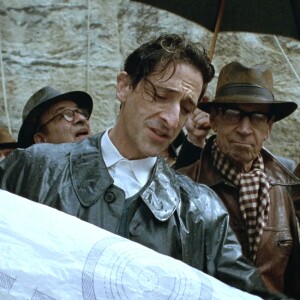
Wednesday Jan 29, 2025
Wednesday Jan 29, 2025
Brutalism was an architectural style that was popular from the 1950s to early 1980s that consisted of raw concrete surfaces, monochrome colors, minimal ornamentation, and exposed structural elements. It is the architectural style that is referenced in the title of The Brutalist, a film directed by Brady Corbet that has been nominated for numerous accolades this year. On this week's episode of Silent Generation they boys share their thoughts on The Brutalist before discussing Brutalism as an architectural style. Amongst other things they discuss how the the life of local Chicago architect and Holocaust survivor John Macsai differed from that of Laszlo Toth’s, how Notre Dame’s Brutalist library features a large mural religious mural that is colloquially known as “Touchdown Jesus,” and how UIC’s Brutalist campus was not in fact designed to quell student protests.
Links: Brutalism Pinterest board: https://pin.it/5WbTWzVSoThe Brutalist ending explained: Director Brady Corbet reflects on building that transformative epilogue by Wesley StenzelInterview with 'The Brutalist' Filmmakers Brady Corbet and Mona Fastvold by Susan KouguellThe Trauma of Inevitability: Brady Corbet and Mona Fastvold on “The Brutalist” by Isaac FeldbergOral history of John Macsai interviewed by Betty J. Blum.Stroger Switch + Purple Rain Redux (Ep. 90 of 99% Invisible)Were Brutalist Buildings on College Campuses Really Designed to Thwart Student Riots? by J Bryan LowderBoston City Hall is officially a landmark by Roberto ScaleseUgly Buildings Tour
Recorded on 1/26/2024
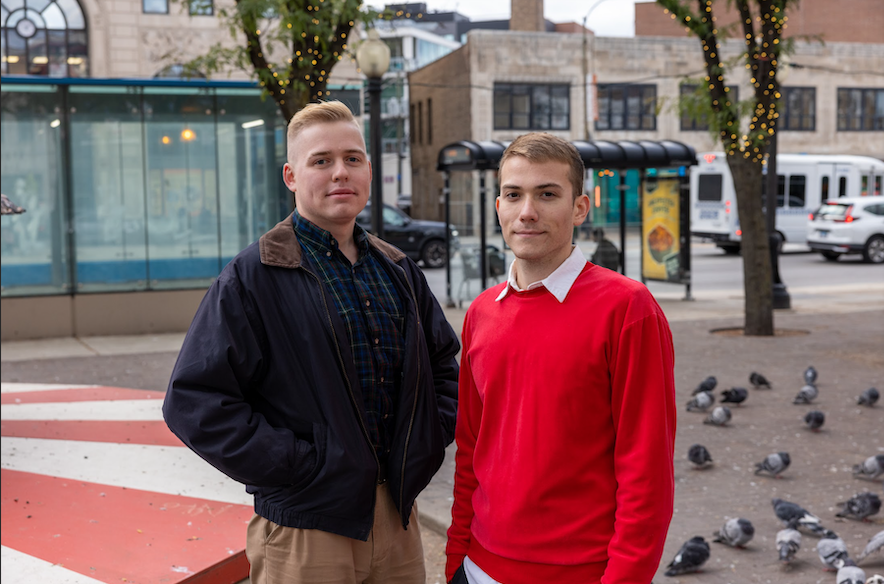
Joseph & Nathan
Joseph (left) grew up in Las Vegas and works in construction management. Nathan (right) grew up in Chicago and works as a librarian.
Contact us with any questions or suggestions at:
silentgeneration.chi@gmail.com










